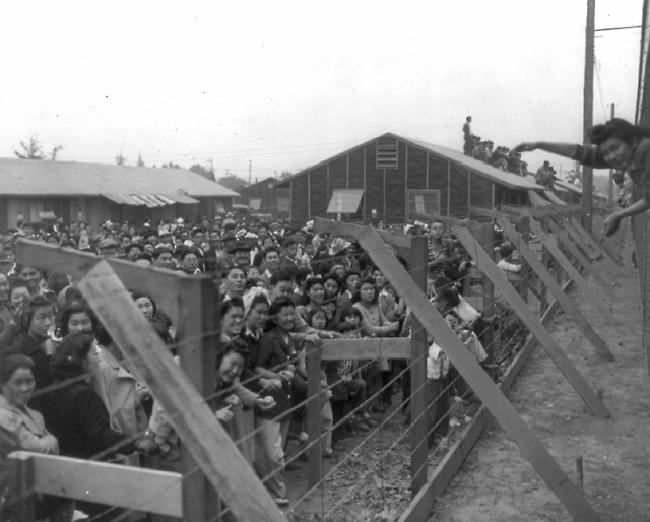|
The Relocation of Japanese Americans Digital History ID 4083

Credit: Library of Congress
Media type: photograph
Museum Number: cph 3b07599
Annotation: Even before World War II and the Japanese attacks on Pearl harbor and U.S. military installations in Thailand, American citizens of Japanese descent had long suffered intense racism and hostility in the United States from business owners and farmers who unsuccessfully competed against Japanese-American labor. After Pearl Harbor, Anti-Japanese sentiment reached all-time high as Americans of Japanese descent were subjected to curfews and forced relocation initiated by politicians supporting anti-Japanese constituencies.
On February 19, 1942, just under two months after the attack on Pearl Harbor, President Franklin D. Roosevelt issued Executive Order 9006, requiring the “evacuation” of all Americans of Japanese heritage into ten separate concentration camps known as “relocation centers” across the United States. Canada followed soon followed suit, ordering 23,000 Canadians of Japanese descent into similar camps. “Evacuees” were required to leave all possessions that could not be carried, and no compensation was offered for the significant financial losses suffered by over 120,000 Japanese-Americans, of which over 2/3 were American citizens.
“… I remember my mother wrapping a blanket around me and my pretending to fall asleep so she would be happy, though I was so excited I could not sleep. I hear there were people herded into the Hastings Park like cattle. Families were made to move in two hours abandoned everything, leaving pets and possessions at gunpoint…”
-Joy Kogawa, from “What I Do Remember of the Evacuation” (1973)
Published in The Chicago Review, Vol. 42, Nos. 3 & 4
Year: 1942
Copyright 2021 Digital History
|
